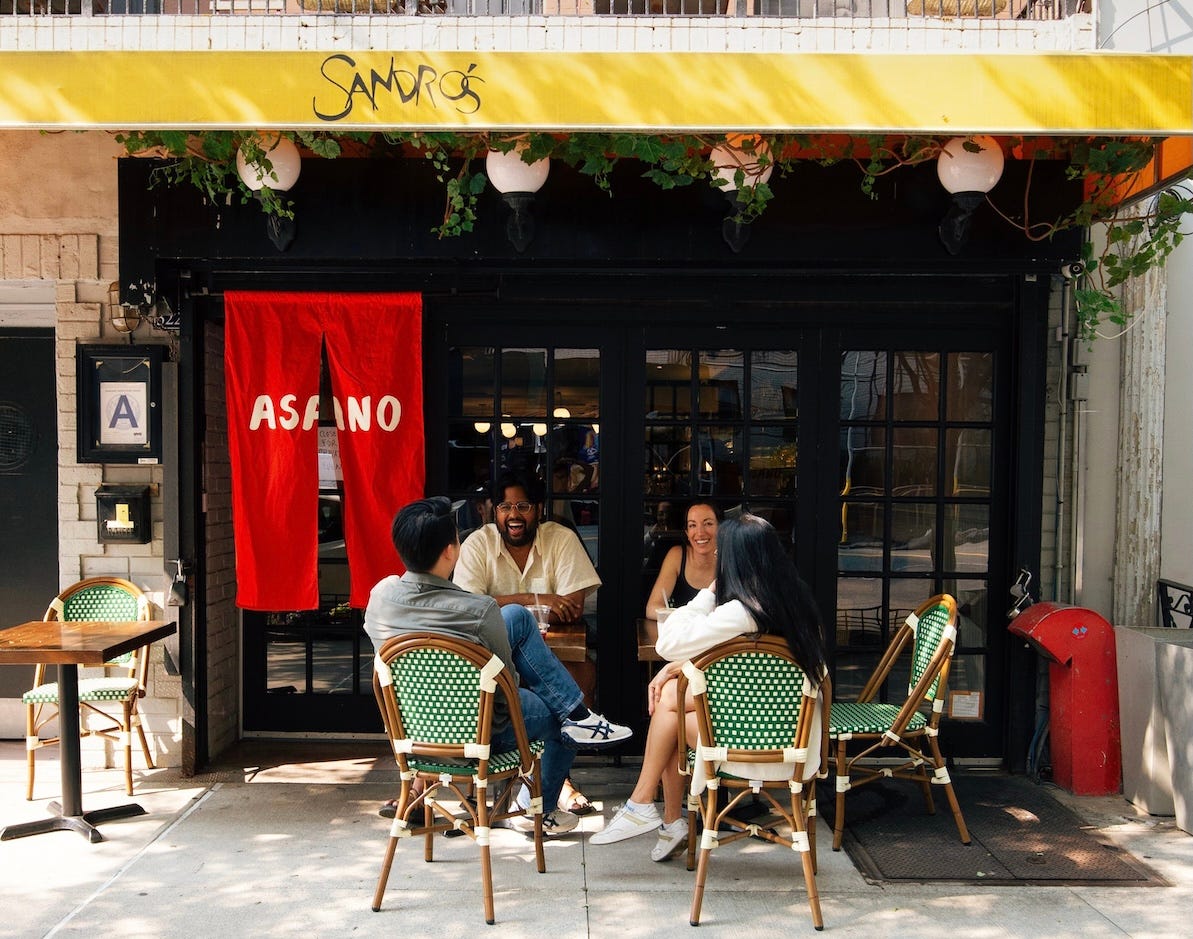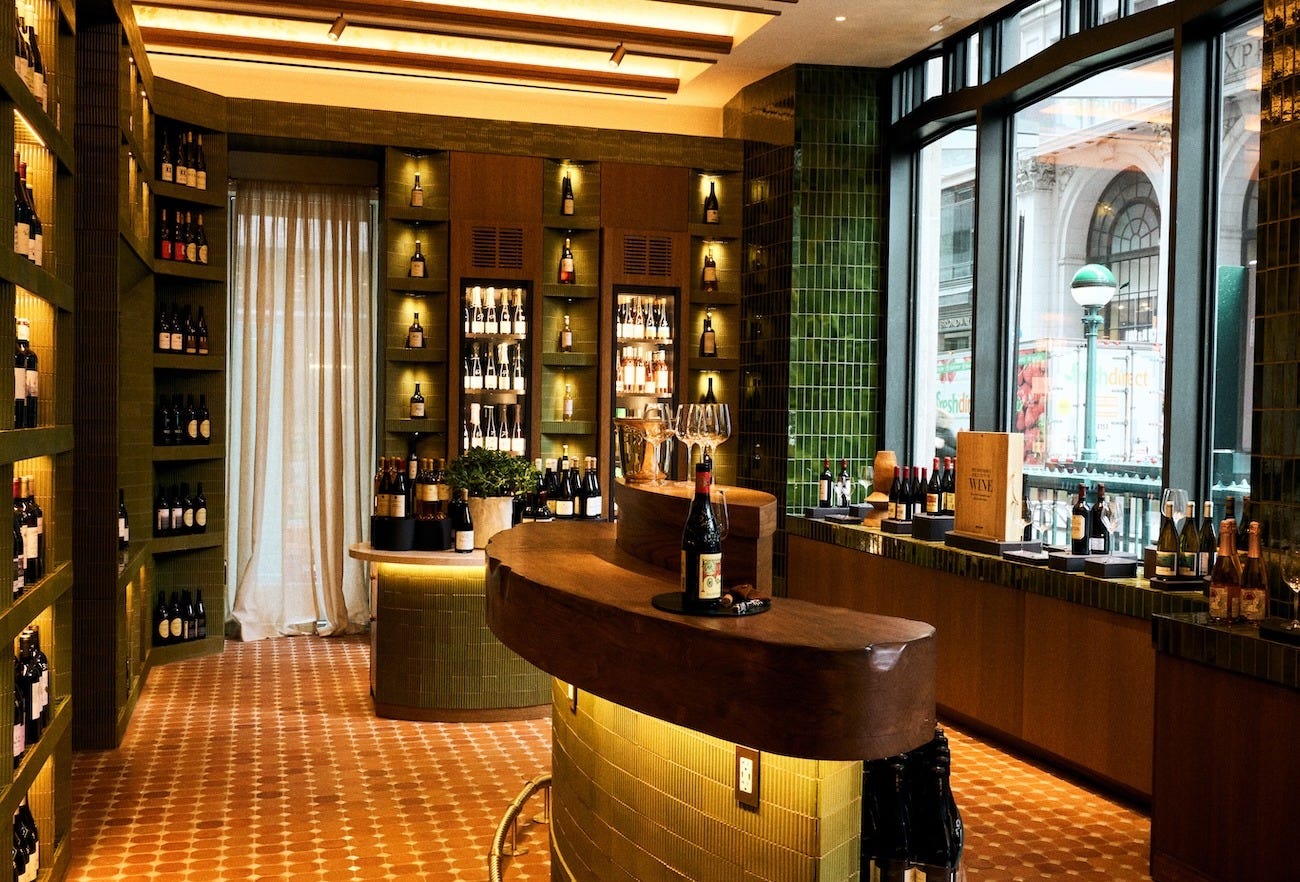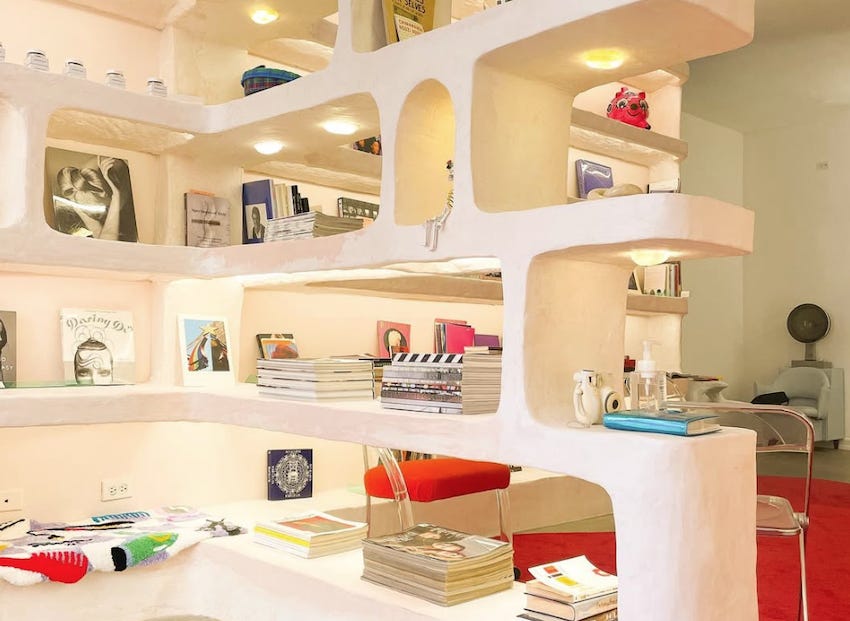This week we’re sharing our exclusive Lisbon travel guide, featuring the city’s coolest new wine bars, highlighting ways to celebrate Juneteenth & Pride this month and introducing you to our cool friend: Carly Krieger of Past Lives Studio.
Binx
Christopher Street’s newest wine bar is an absolute smash hit from the team behind Moonflower just a little further north in the neighborhood and it’s called Binx. Duo, Rebecca & Rowen, bring the culinary and design expertise they honed in the city and at Frankie in Jersey City to bring us their best restaurant yet. Next time you’re in the West Village, do yourself a favor and stop in, grab some great natural wine and fried chicken, and thank us later.
ASANO
Ever wonder how dinner-only restaurant spaces are used during the day? The answer is typically, not very much, but ASANO reimagines the potential of this prime NYC real estate. Born out of the Japanese philosophy of mottainai, ASANO utilizes empty morning dining rooms of well loved restaurants to bring coffee, matcha, and tea to spaces otherwise vacant in the morning hours. The first cafe opened this week inside Sandro’s in the Upper East Side with another opening planned for this fall!
Printemps Wine Shop
French retail superstars Printemps made a big splash earlier this year with the opening of their gorgeous Wall Street department store. Now, they’re back with another exciting concept on the same block – Printemps Wine Shop recently opened with a focus on quality and a sense of place. With many of the wines and spirits sourced from France, the new space aims to bring their selections to life, both through knowledgeable staff as well as weekly in-store tastings. Open daily from 10a-10p at 1 Wall St.
Lei Wine
Earlier this week, Lei quietly opened next door to Nom Wah Tea Parlor on Doyers Street. Anne Shi, a partner at King and Jupiter, is the genius behind Chinatown’s hottest new spot, and has designed the space to honor the neighborhood through its selection, cuisine, and even its artwork which is by artists of Chinese ancestry. Anne’s selection of wine focuses on natural, low-intervention wines and is complemented by food by Patty Lee (formerly of Mission Chinese.)
Last month, we shared our Travel Guide to Porto, Portugal – an amazing coastal city full of natural wine bars and traditional Portuguese fare. Today, we continue our summer travel series with one of our most requested guides of all time: LISBON!
In this exclusive guide we’ve rounded up our favorite places to eat, drink, shop, and do across the ancient, hilly, and tiled city. You can expect everything from the hottest spots to grab a late dinner to where you can find an amazing breakfast in the backyard of a furniture store. Of course, we’ll have lots of art, shopping, and pastéis de nata recs too!
This is a special edition guide for subscribers at the paid tier. Paid subscribers make travel content like this possible – allowing coolstuff to bring you recs straight from the heart all around the world. If you're not yet a newsletter subscriber, subscribe now! OR upgrade your subscription to read the guide (plus full access to the newsletter archive and additional newsletters!)
In celebration of Pride Month, the fifth edition of the Aesop Queer Library will be popping up on June 26th through June 29th. In this annual tradition, Aesop removes all products from their Rock Center store and fills the shelves with queer stories to amplify voices. This year, the library celebrates the vibrant vocabularies crafted by the LGBTQIA2S+ communities and will showcase the power of language as both a shelter and a declaration of defiance, which paths with this year’s intention, “in other words – language as liberation.”
In partnership with the American Civil Liberties Union (ACLU) and Penguin Random House, the Library has distributed over 100,000 books by and supporting the queer community, around the world.
Meet Carly, founder of Past Lives Studio - the New York-based interior design firm and vintage dealer specializing in restored 19th and 20th-century furniture and decorative arts. Founded in 2021, Carly’s studio offers a curated mix of pieces spanning the 1800s to the 1980s, with a focus on Viennese Secessionist, French Art Deco, Swedish Grace, and Italian Modernism. Past Lives seeks the unordinary, and refinishes it with the finest attention to craft material and through the use of custom finishes and bold upholstery, she adds her own touch to timeless and historic designs, resulting in one of a kind pieces. We caught up with Carly to hear how her sourcing journey began and what’s new for Past Lives.
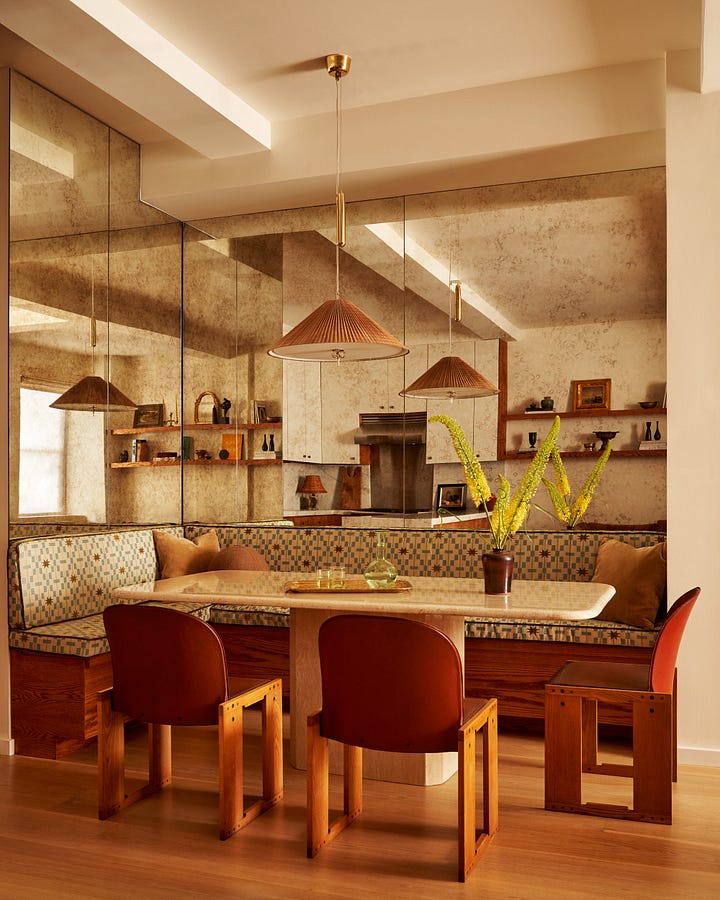
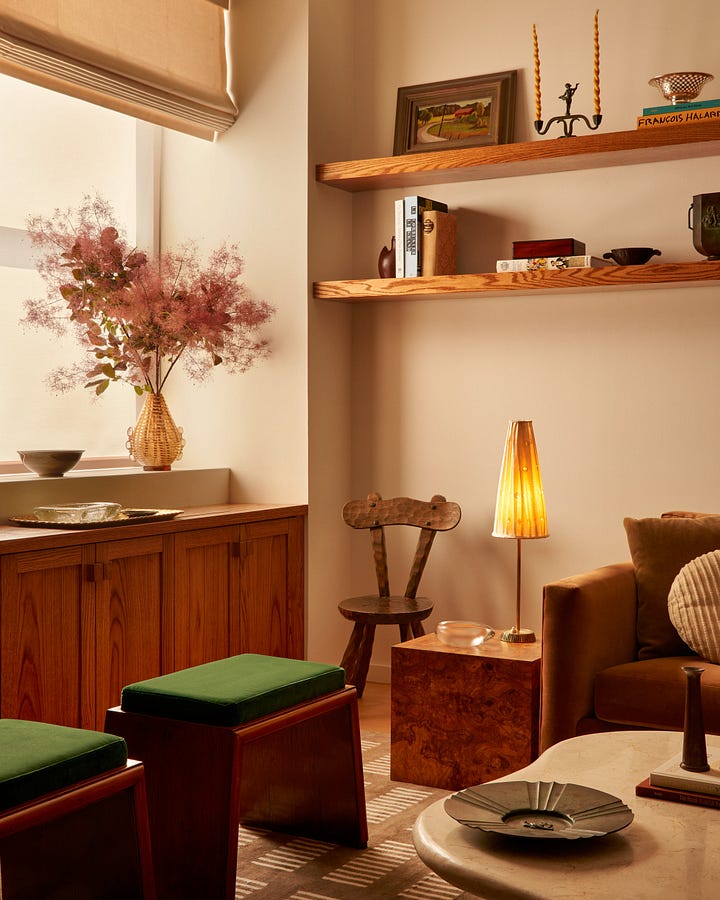
How did your career as an interior design and vintage dealer begin?
It was the summer of 2020 and I had been working as a project manager at a creative agency. For a while I had felt like if I could have started my career over, I would have pursued interior design, but I didn’t have the nerve to quit my job and go for it. When the agency closed the New York office due to covid, it felt like the moment to make the leap was presenting itself to me. I sent a cold DM on instagram to a showroom that had recently opened in Williamsburg called The Somerset House. I stopped by the showroom the following day and this turned into working there and spending the next year helping them with their staging and interior design projects. It was there that I got a crash course in vintage and antique design from Alan. Witnessing how he boldly layered Baroque pieces with American midcentury and Italian Modern pieces to create beautiful and cohesive compositions - it showed me that there is no singular, cookie cutter way to design with antique and vintage collectibles. You don’t have to be a purist or pigeon hole yourself into one lane. If you are mindful about materiality, scale, color, and form you can combine pieces from different eras, regions, and styles in a way that feels really refreshing.
This gave me the confidence when I founded Past Lives Studio in the summer of 2021 to trust my own design point of view and know that I could still be playful and experiment, even with more serious, historical design pieces. Over the past few years, I have established the design language for Past Lives Studio through experimentation. Early on I was collecting and selling items that were from the second half of the 20th century - a lot of 1980s postmodern pieces, a lot of 1970s Italian pieces. I still collect and appreciate pieces from that period, but as I’ve continued my sourcing practice, my taste has changed, and these days I tend to gravitate towards the first half of the 20th century - collecting mostly from the 1920s - 1950s. The pendulum may swing back in the other direction again in the future, I think that’s what’s so fun about not needing to put myself in a box - the brand and the vision can evolve and that's okay!


Tell us about how you source vintage items for your clients and your shop? What periods do you like to focus on in your findings?
I try to make it a point to fit a trip to the local flea market into my itinerary when I’m traveling - visiting Brimfield in Massachusetts, the Rose Bowl flea in LA, the Marche Aux Puces in Paris, and La Lagunilla market in Mexico City - but I’d like to be able to do even more in person sourcing in the future. It’s so valuable to be able to see items in person, feel their weight, see the signs of age. Sometimes sourcing online better fits the project timeline, so for my shop and for interior design projects I do a lot of online perusing - scouring ebay and auctions. I tend to focus on a few areas and design movements, these being (but not limited to) Swedish Grace, French Art Deco, Italian Modern, and Viennese Secessionist. When I’m sourcing - I like to look for a mix of designer furniture pieces and lighting, and completely unknown found objects and artwork - items that you can’t find anywhere else that feel like they’ve been treasure picked. Whether it’s a figurative sculpture, a Danish School oil painting, or an ashtray with a pictorial relief. Items that have flair and ornament are really striking to me and capture my heart.
What’s your favorite part about the New York interiors community?
There is so much talent and originality here. Although I specialize in vintage design, when I’m working on interior design projects I welcome the opportunity to collaborate with independent contemporary artists, makers and designers whose work I admire so greatly. This ends up being such a highlight of the interior design process and results in a more layered project. I’m working on a few interior design projects right now and I’m really excited to see my Bedstuy project come to life. We’re working with a few independent woodworkers, lighting designers and artists to create custom pieces for it.
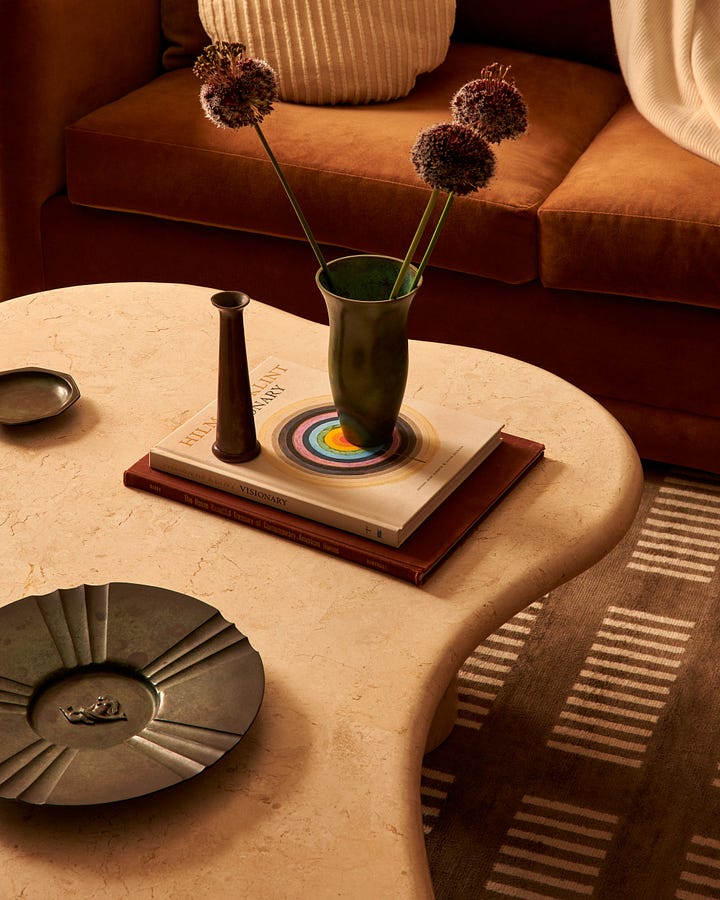
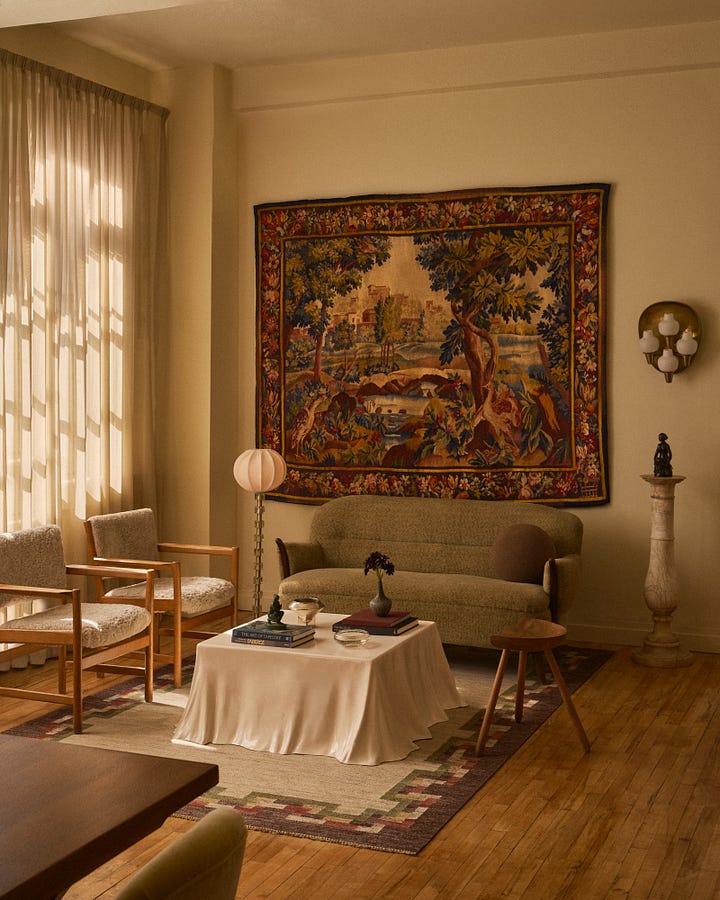
Your new showroom is so stunning! How has having the physical space impacted how clients interact with your collection?
Thank you so much! It’s really been a game changer for people to understand the vision I’m working to communicate. There is only so much world building you can create when staging items in a stark photo studio with a white backdrop. Having a physical space has allowed me to meet more designers, increase access to my collection of vintage furniture, art, lighting, and objects as well provide additional visibility to my interior design and furnishing practice. I also tend to source in collections - based on materiality. Right now I have a large collection of bronze GAB Sweden decorative items from the 1930’s, a large collection of Turquoise ‘Argenta’ ceramic pieces by Wilhelm Kåge for Gustavsberg, and a very large collection of 1930’s Swedish pewter objects by Svenskt Tenn. Being able to have a physical space to show these large collections all together has been really helpful.
Do you have a favorite type of furniture piece, object or textile you enjoy sourcing best? How much research goes into the pieces that you source?
I love sourcing lighting. Vintage lighting can drastically transform a room and a sculptural lighting fixture can provide light, warmth and dimension while doubling as an art piece. For designer items - I’m looking at the material used in the manufacturing of the item and the material quality of the item, paying attention to the design details - the dimensions and scale of the piece, and looking for the markings that that particular piece might have that provide proof. These are stamps, labels, tags. Labels and tags can get picked off throughout the years - so this isn’t the sole thing I rely on. Knowing the selling source and the provenance of the item is also a helpful indicator to know if what I’m buying is real. I also source a large group of furniture and objects that are from unknown designers. These might feel more like found objects - one of a kind pieces that don’t need a designer marking to understand their value. They are unique in material, shape, patination, and this gives them intrinsic value.
Follow Along:
www.pastlives.studio
@pastlives.studio
P.S. Upgrade to paid to make sure you aren’t missing out on the rest of this newsletter including gallery shows, ways to celebrate Juneteenth and Pride, happy hours, food & drink pop-ups &&& more!







